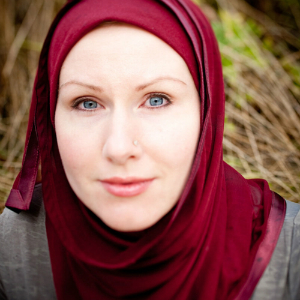UPDATE: April 14, 2019 (posted in May 2019)
At this time, AAT has completed deliberations. We do not have anything to add to the detailed discussion of our process and analysis contained in the blog post below.
We have developed a new standard operating procedure for concom members, Safety, and Chairs to follow regarding incidents at WisCon, and it is our hope that this new process will help avoid the miscommunication that took place at and after WisCon 42.
We would like to reiterate that our approach in handling reports of abuse is to focus on specific behaviors and their effects, not to identify politically reprehensible individuals. In cases such as the “Killable Bodies” panel, where harm is caused without obvious intent, we are interested in whether someone is willing to acknowledge the impact of something they did or said, to apologize where necessary, and to work toward avoiding future harm by making changes––whether those be in the form of concrete actions or of learning to better understand others’ perspectives.
This is a follow-up post from WisCon’s Anti-Abuse Team on the “Killable Bodies in F&SF” panel.
We have begun the process of working through the aftermath of this panel and its fallout. We have read the formal reports (15 made at the convention and more in its aftermath) and public comments, and we are continuing our discussions with the people who were involved. At this time, we have not yet reached any decisions, but as information circulates about what happened, we do have some clarifications to make.
First, we would like to clarify the process by which a member of WisCon may be banned from the convention. During the convention, the Safety team collects reports and provides support to WisCon members who experience difficulties of any kind, from trip hazards in the hallways to cases of abuse and harassment. When serious issues arise, Safety brings them to the convention Chairs, who are the only ones who have the authority to make at-con decisions about disciplinary action. Once the convention is over, the Anti-Abuse Team (AAT) – a larger group with a slower deliberative process that operates according to transformative justice principles – takes over and discusses issues that were not fully resolved at the convention.
WisCon’s processes are constantly evolving. The AAT also takes the lead on designing and implementing new guidelines where they prove necessary. We have read and listened to many criticisms about the way WisCon handled this case. We hear that many in the community were uncomfortable that a public post was made before the individual in question had been contacted. We understand why WisCon’s chairs made the decision that they did in making this post, but we agree that this process was not ideal. As part of our work in reviewing this case, we are developing a framework to follow for contentious, time-sensitive cases such as this one, and we hope that our updated frameworks will help us make better decisions in the future.
Questions have been raised about the panel’s planning and composition, so we would like to briefly describe our panelist selection process. Anyone can submit a panel suggestion to WisCon; these suggestions do not have to be fully fleshed out and can be a broad idea. Panel Program staff goes through these suggestions and wrangles them into a list of proposed programming. That list is then sent out to WisCon attendees to mark their interest in panels. At this stage, attendees can also mark whether they would like to be on the panel as a panelist or a moderator. The Panel Programs team then assigns people to panels based on the availability and interest of those who have volunteered to participate. While WisCon does its best to vet and balance panelists, sometimes a panel composition ends up not being ideal, or panelists find themselves in conflict as the discussion goes on.
Our Code of Conduct affirms respectful disagreement and the discussion of controversial ideas while disallowing comments that harmfully reinforce structures of oppression. A fast-moving convention can be a complex landscape to navigate; WisCon makes decisions based on members’ reports of harm. In terms of what was said at the panel itself, it is clear from the many reports that audience members and panel participants felt that distressing and harmful statements were made. Safety acted promptly to provide support, and the Chairs acted to minimize future harm. While we may have changes to suggest about the details of the process, we support the at-con team’s responsive attention to the safety of WisCon’s members.
It is also clear that perceptions from those who attended the panel vary significantly. We would first like to apologize for the wording in the initial public post that may have mischaracterized the panelist’s background and what happened at the panel. We have not completed our investigation, but at this preliminary stage, we can state that this was not a case of an outright Nazi sympathizer or alt-right infiltrator at WisCon, but rather a case of a conversation going badly awry amid deeply fraught political and emotional territory. There does not seem to have been any intent to promote Nazi ideology.
However, we also want to note that intent cannot always prevent harm, especially within a social context in which support for unconscionable acts has become normalized. A speaker might assume that everyone in the audience knows that they condemn bigoted violence. However, antisemitism, white supremacy, and Islamophobic and anti-immigrant violence are at high levels under the current US administration and continue to rise. Without an explicit condemnation, it can be unclear whether a speaker is seeking to understand how these ideologies come about and why people promote them, or whether a speaker is tacitly promoting apologism for such ideologies.
Finally, we wish to clarify that WisCon does not make decisions about who may attend the convention based on identifying politically reprehensible individuals. We focus on specific behaviors and their effects, and we are interested in whether someone is willing to acknowledge that something they did or said caused harm regardless of intent, to apologize where necessary, and to work toward avoiding future harm by making changes––whether those be in the form of concrete actions or of learning to better understand others’ perspectives.
We thank the WisCon community for its patience with our deliberations. If you would like to get in touch to share information or ask further questions, you can contact us at antiabuse at wiscon.net.


